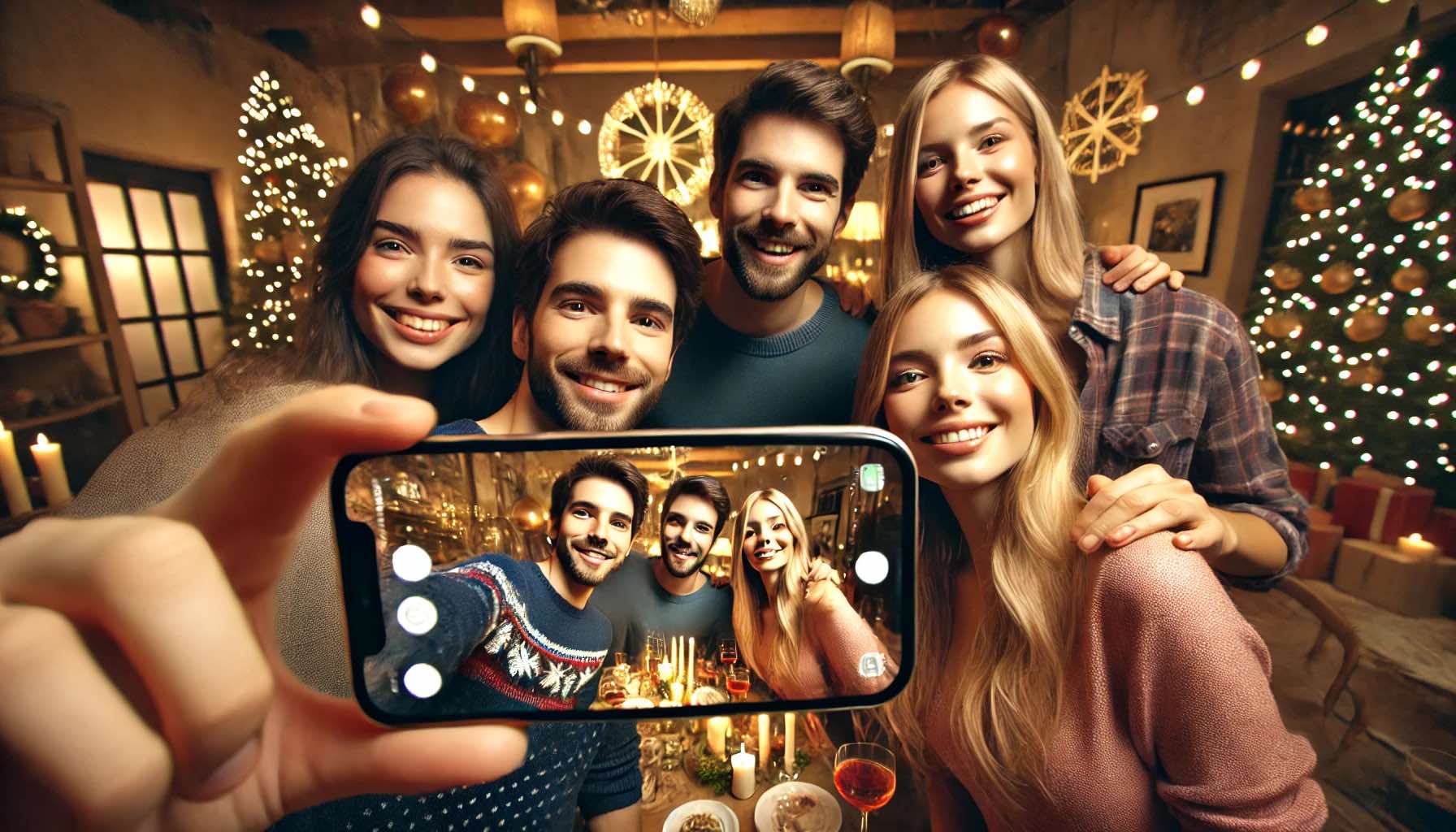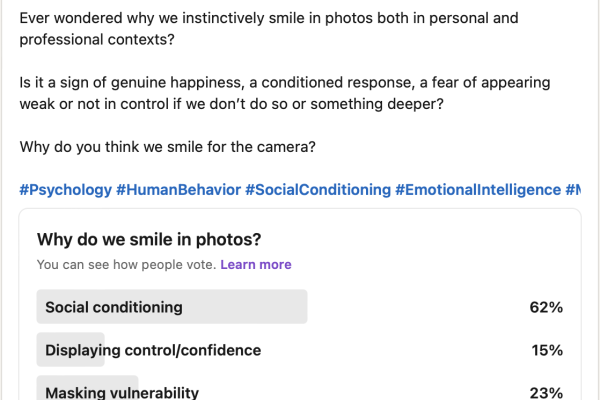“Smile!”
Nina prompted us—me, my wife, and two friends—as she posed for a group selfie with her new iPhone. This was at my wife’s relative’s party a few weeks ago, and it got me thinking about why we smile in photos.
The prompt to “smile!” feels Pavlovian in essence, much like Pavlov’s famous conditioning experiment with his dog, where a bell eventually made the dog salivate even without food. Similarly, smiling for the camera has become almost automatic, a conditioned response—though no obvious reward is offered for our smile, beyond perhaps the fleeting satisfaction of seeing ourselves radiating in photos.
But there’s more going on here. Smiling for the camera is far from a simple reflex; it is deeply tied to human nature, our desire for acceptance, and the dynamics of social behavior. Let’s explore some reasons we may instinctively smile:
1. Social Conditioning Everyone smiles in photos nowadays—it has become the norm. This wasn’t always the case, as old photos of our great-grandparents clearly show, where they stare blankly at early, booth-like cameras. Today, not smiling in a group photo would make you stand out like a fly in a glass of milk, possibly ruining the vibe for everyone else and drawing unwanted attention to yourself. Smiling, in this sense, is about fitting in—conforming to what is socially correct.
2. Displaying Control and Confidence The camera lens can feel like both judge and jury. It freezes a moment in time that others will see, and we instinctively want that moment to convey positivity, confidence, and control. The “halo effect” suggests that people are often judged based on appearances, more than we may admit. A smiling face projects capability and an optimistic outlook—traits that attract others, including those who might need reassurance. On the other hand, failing to smile can suggest we are overwhelmed or unable to enjoy our lives.
3. Masking Vulnerability Smiling is also a way to mask vulnerability. Even if we are feeling sad, exhausted, or anxious, we often still smile for the camera. This suggests that, despite society’s increased emphasis on the courage to show vulnerability, we are still conditioned to hide it. A smile in a photo tells the world: “I’ve got this under control. I can handle my challenges.” It’s a shield, protecting us from appearing needy or incapable.
So, What’s the Point of This Article?
The reasons why we smile in photos tell us a lot about the human condition. Our actions are deeply tied to our needs for acceptance, validation, and the avoidance of social death—the fear of being rejected or marginalized by our group. Whether we’re smiling to conform, to appear confident, or to mask our true emotions, the underlying motivation is often the same: to avoid being cast out or perceived as “less than.”
Perhaps the antidote to this deep-seated fear lies in striving to be useful, productive, and responsible—to ourselves, our families, our colleagues, and our communities. By doing so, we reduce the likelihood that our fear of rejection will be triggered.
And when we do smile in photos, let it be with the knowledge that we are doing our best for ourselves and for those we care about.
What are your thoughts, dear reader?
—Philippos
P.S.: Here’s a poll I’m currently running on the same topic. Take a look at the responses and share your thoughts!



